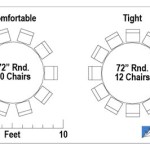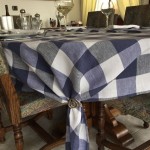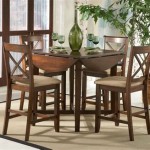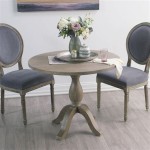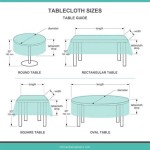The Function of Tablecloths
A tablecloth, a seemingly simple piece of fabric, plays a multifaceted role in the dining experience. It serves not only as a protective barrier for the table surface but also enhances the aesthetic appeal of the dining space, elevates the overall presentation of the meal, and contributes to the creation of a specific atmosphere. Beyond its practical purpose, a tablecloth possesses cultural significance, often reflecting social customs, regional traditions, and personal style.
Protection and Preservation
The most basic function of a tablecloth is to safeguard the dining table from spills, stains, and scratches. This is especially crucial for delicate table surfaces made of wood, glass, or marble. A tablecloth acts as a protective shield, absorbing spills and preventing direct contact between food or drink and the table. The material of the tablecloth also plays a significant role in its protective properties. For example, a fabric like linen is known for its durability and resistance to staining, making it ideal for everyday use. On the other hand, more delicate materials like silk or lace might be reserved for special occasions.
Beyond protecting the surface, a tablecloth also helps maintain the table's cleanliness. By providing a clean surface for dining, it enhances hygiene and ensures that the food is free from contamination. This is particularly important when handling delicate foods or serving a large group of people. The smooth surface of the tablecloth also facilitates easy cleaning and wiping, allowing for a quick and effortless cleanup after meals.
Enhancement of Aesthetics and Presentation
The aesthetic impact of a tablecloth on the dining setting cannot be underestimated. A well-chosen tablecloth can transform a simple table into a welcoming and visually appealing centerpiece. Its color, pattern, and texture contribute to the overall ambiance of the dining space. A vibrant tablecloth can add a touch of vibrancy and warmth to a room, while a neutral tablecloth can create a sense of sophistication and elegance. The tablecloth acts as a backdrop for the food, enhancing its visual appeal and creating a harmonious presentation.
The choice of tablecloth material also influences the overall aesthetic. Linens, with their natural texture and subtle sheen, create a classic and timeless look. Cotton tablecloths are known for their practicality and affordability, while silk tablecloths offer a luxurious and elegant touch. Lace tablecloths add a touch of romanticism and sophistication, while patterned tablecloths can introduce a playful and eclectic element to the dining space. The tablecloth's role in enhancing the aesthetic appeal of the dining experience is essential, contributing to a more enjoyable and memorable meal.
Atmosphere and Occasion
Beyond its practical and aesthetic functions, a tablecloth also plays a crucial role in shaping the atmosphere of a dining occasion. The choice of tablecloth can signal the type of gathering, from a casual family dinner to a formal celebration. A simple, everyday tablecloth might be used for a casual family meal, while a more elaborate tablecloth with intricate patterns and embroidery might be reserved for special occasions like weddings or anniversaries.
The color of the tablecloth can also influence the atmosphere. Warm colors like red or orange can create a more vibrant and energetic environment, while cooler colors like blue or green can promote a sense of calm and tranquility. The overall design and style of the tablecloth can also contribute to the desired atmosphere. A vintage tablecloth might evoke a sense of nostalgia, while a modern tablecloth might create a contemporary and stylish ambiance.
Cultural and Social Significance
Tablecloths often hold cultural and social significance, reflecting customs, traditions, and personal style. In many cultures, a tablecloth is considered an essential part of the dining experience and is often passed down through generations. The choice of tablecloth can reflect regional traditions, religious beliefs, or family heritage. In some cultures, certain patterns or colors of tablecloths are associated with specific occasions or social events.
The use of tablecloths also varies across cultures. In some societies, tablecloths are considered essential for every meal, while in others, they are used only for special occasions. The size, shape, and material of the tablecloth may also differ depending on the culture and social context. The cultural and social significance of tablecloths underscores the importance of this seemingly simple object in shaping the dining experience and reflecting the values and traditions of different societies.

Notation Tablecloth Blue Theme Table Cloth Outdoor Function Decor Al Gift Children Party

Modern Simple Thickening Solid Tablecloths Round Rectangular Multi Function Restaurant Banquet Table Cloth China Lace And Made In Com

Hotel Table Cloth Manufacturer In China Trusun Linen Facotry

4 Restaurant Table Cover Ideas To Improve The Dining Experience Alsco
Oval Tablecloth 60 X 84 Inch Washable Fabric Table Cloth Solid White Cover

Round Table Cloth White Ny Party Hire

Party Central Pack Of 12 Form Function Disposable Plastic Banquet Table Cloth 108 Com

Solid Color Table Cloth Black White Cover Waterproof Temu

Table Cloths Fabric Tablecloth Cotton Picnic Black Com

Solid Color Table Cloth Black White Cover Waterproof Temu
Related Posts

